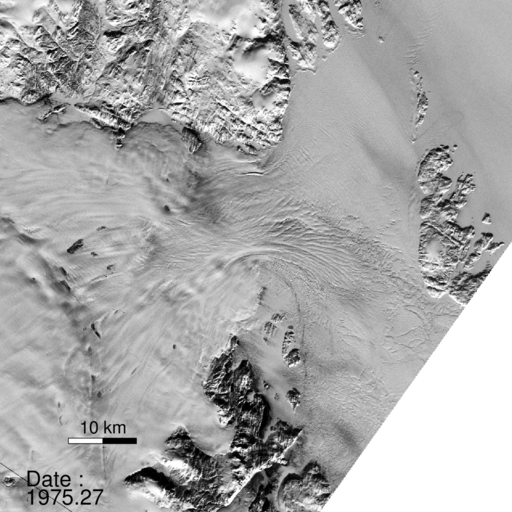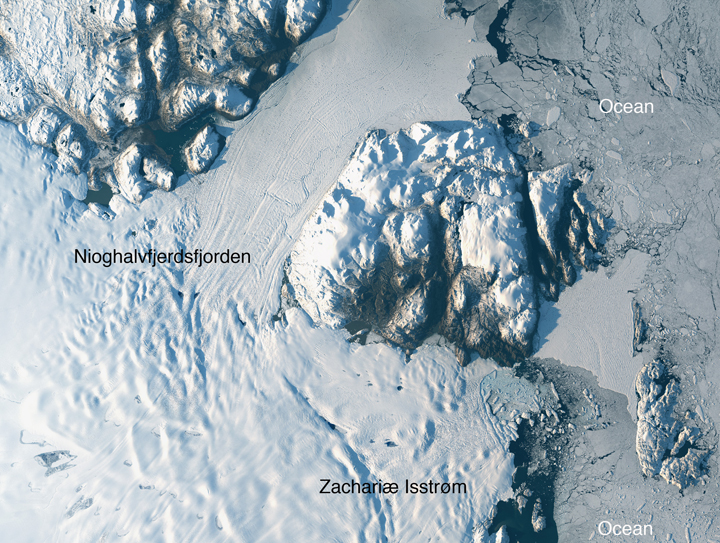A new study has found that another glacier is melting in Greenland and could contribute to a rise in global sea levels.

Zachariae Isstrom drains ice from an area of 91,780 square kilometres, which equates to about five per cent of the Greenland Ice Sheet. Satellite and aerial data — funded in part by NASA have shown that the glacier broke loose in 2012 and has begun a phase of “accelerated retreat.”
If it were to all melt, it could raise global sea levels by 46 centimetres.
READ MORE: Greenhouse gas emissions play growing role in melting glaciers: study
Researchers estimate that it is losing about five billion tons of mass each year, ice that is falling into the North Atlantic Ocean.

“Zachariae Isstrom is being hit from above and below,” said the study’s senior author Eric Rignot, Chancellor’s Professor of Earth system science at the University of California, Irvine, and Joint Faculty Appointee at NASA’s Jet Propulsion Laboratory. “The top of the glacier is melting away as a result of decades of steadily increasing air temperatures, while its underside is compromised by currents carrying warmer ocean water, and the glacier is now breaking away into bits and pieces and retreating into deeper ground.”
Beside Zachariae is another large glacier, Nioghalvfjerdsfjorden, which is also retreating, but at a slower rate. If the two combined were to melt, it could raise global sea levels by 99 centimetres.
READ MORE: Trudeau, first ministers, scientists to gather Nov. 23 to talk climate change
“Not long ago, we wondered about the effect on sea levels if Earth’s major glaciers in the polar regions were to start retreating,” Rignot said. “We no longer need to wonder; for a couple of decades now, we’ve been able to directly observe the results of climate warming on polar glaciers. The changes are staggering and are now affecting the four corners of Greenland.”


Comments